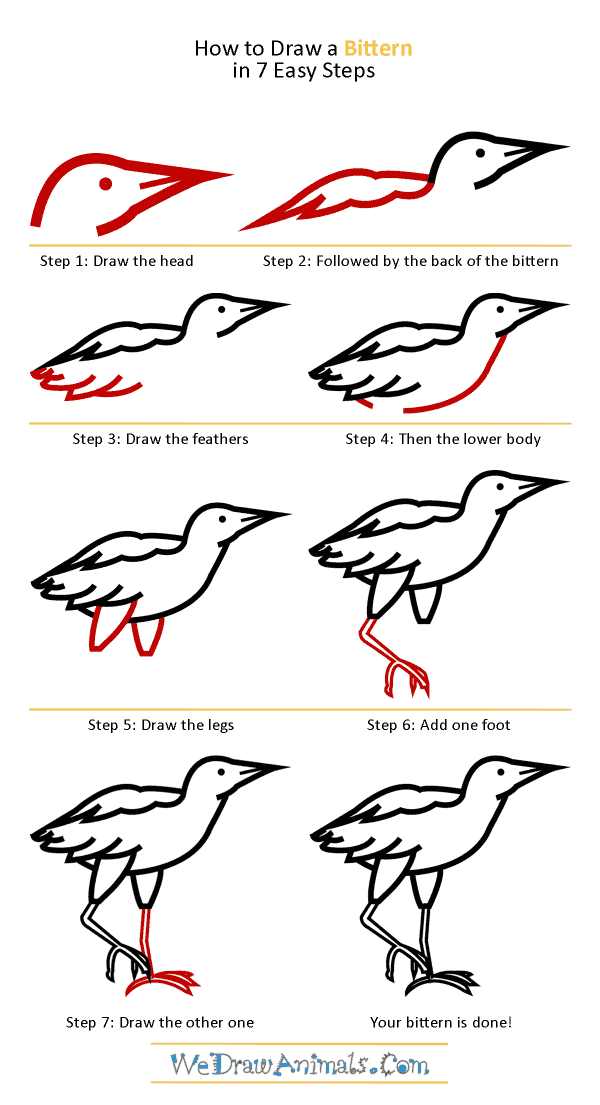In this quick tutorial you'll learn how to draw a Bittern in 7 easy steps - great for kids and novice artists.
The images above represent how your finished drawing is going to look and the steps involved.
Below are the individual steps - you can click on each one for a High Resolution printable PDF version.
At the bottom you can read some interesting facts about the Bittern.
Make sure you also check out any of the hundreds of drawing tutorials grouped by category.
How to Draw a Bittern - Step-by-Step Tutorial
Step 1: Draw a circle. Add a dot inside, near the top of the circle. Draw a triangle on one side, with a line through the middle.
Step 2: Behind the head, draw a curve that angles sharply back to the head, then away again, and then connects back to the head in a wavy line.
Step 3: Draw a bunch of curves under the end of the shape from step 2.
Step 4: Draw a curve that goes from the head to the end of the body, leaving a space for the legs.
Step 5: Draw two curved trapezoids with narrower bottoms under the body in the space for the legs.
Step 6: Under one of the trapezoids, draw a line that angles back, then forward. Add two lines going forward, and one backward, from the end of it.
Step 7: Under the other trapezoid, draw a straight line, that has three lines going forward, and one going backward, from the end of it. Congratulations! You have drawn a bittern!
Interesting Facts about the Bittern
The bittern is a type of bird that can be found in many areas of Europe, North Africa, and central Asia. The bitterns are most commonly found in areas that have shallow reed beds or swamps. These birds need to have a large area of reed beds with shallow areas to hunt fish in order to strive. Loss of areas like this is contributing to the loss of this interesting bird.
Did you know?
- You are more likely to hear one of these birds long before you are able to see it because they are known for having a very long booming type call that can be heard from up to 2 km away in the right conditions
- These birds are also known for being pretty secretive, which is only made worse by the bitterns ability to be able to blend in with its surroundings so well
- Due to the multiple shades of brown that cover the bird, as a defensive mechanism the bird will pause and point its bill straight into the air with its neck stretched out vertically to blend in with the reed stalks, helping them hide from predators
- When flying this bird can often be confused with the heron, though close up you can see the obvious coloration differences








